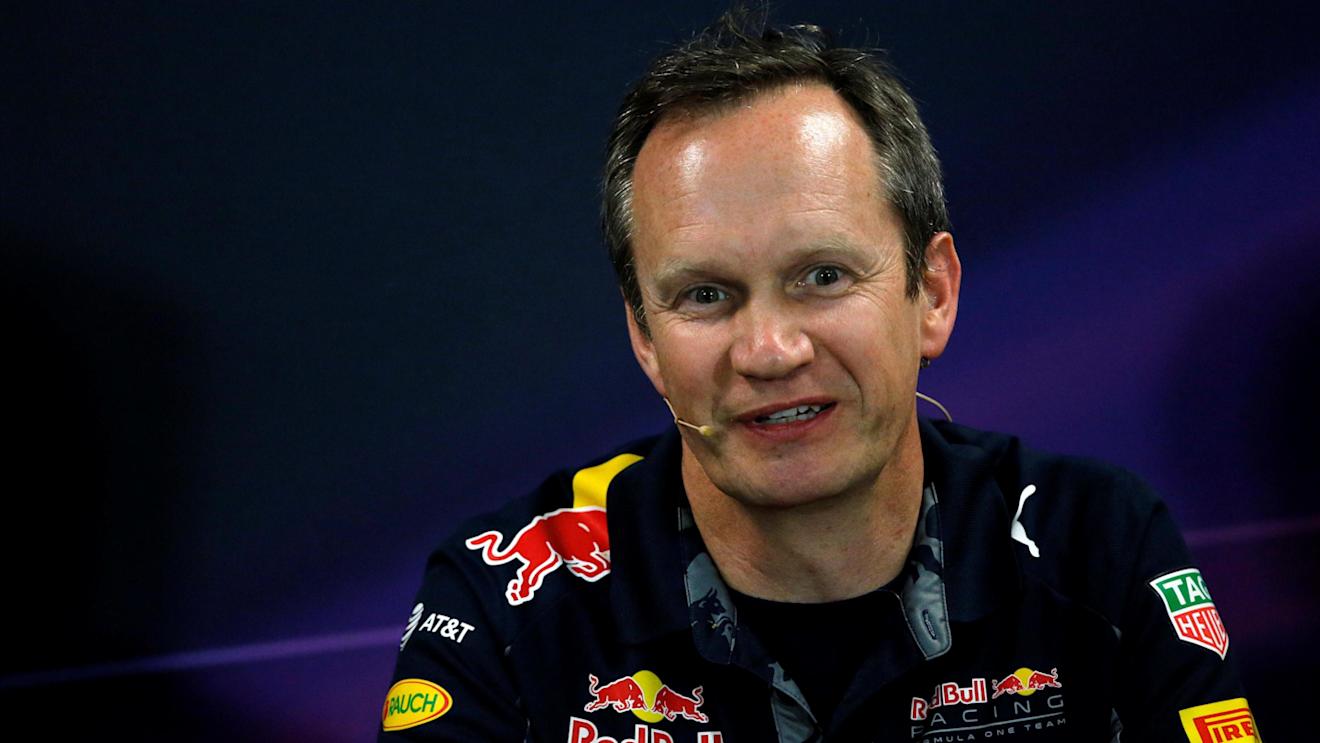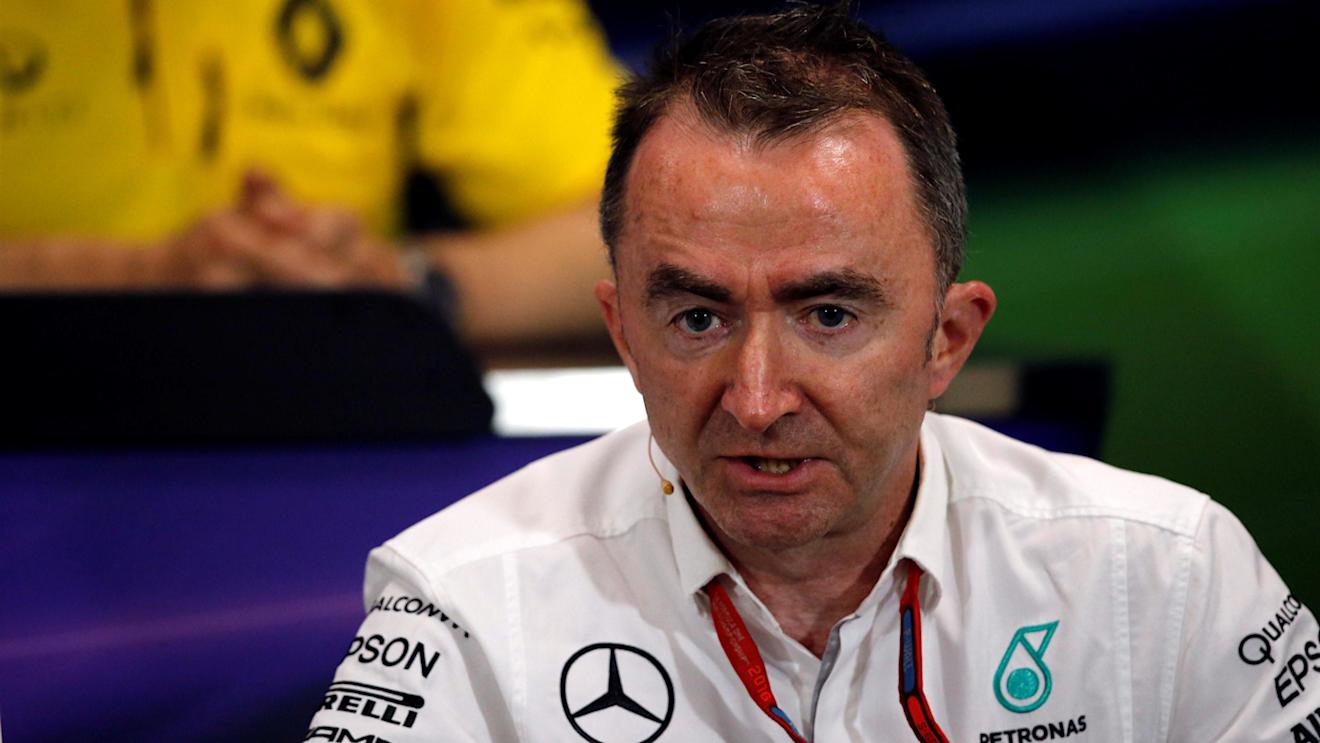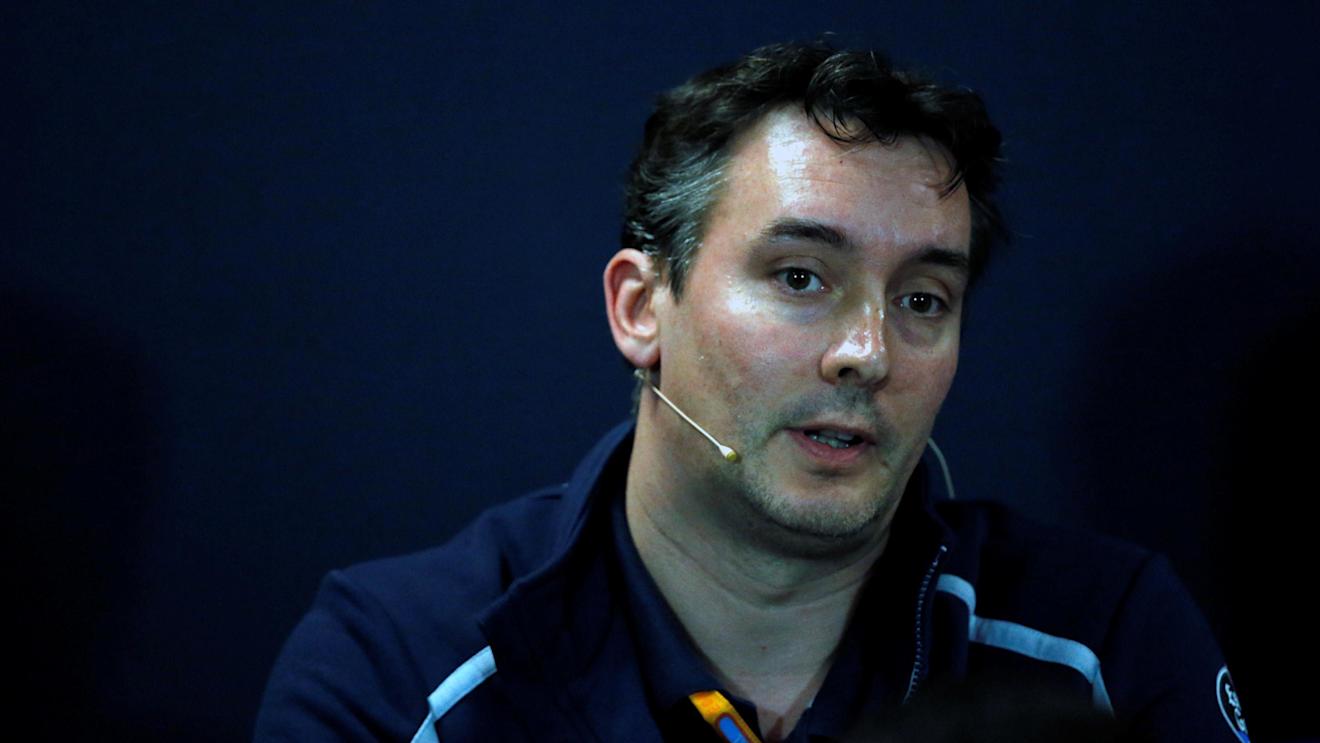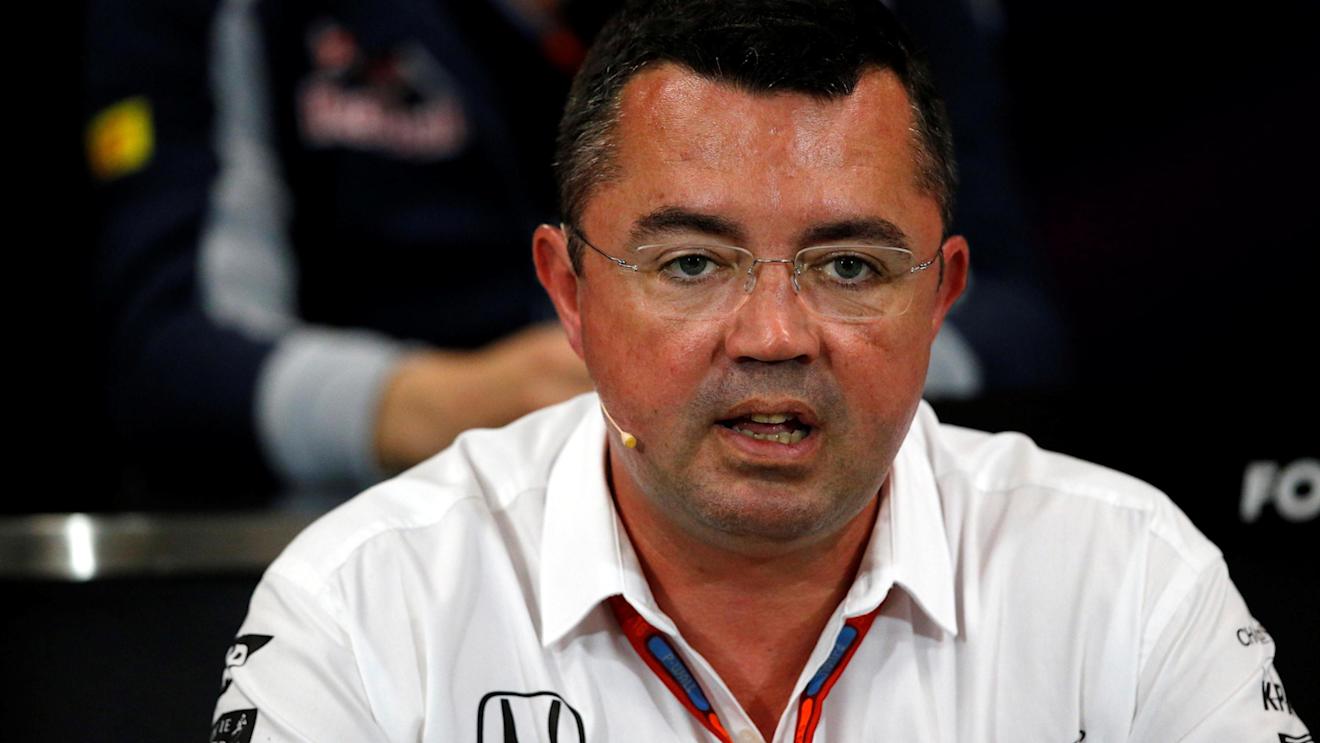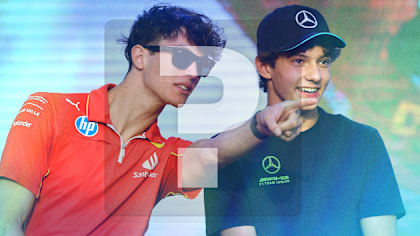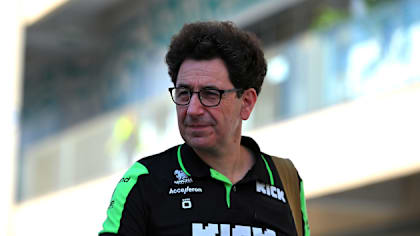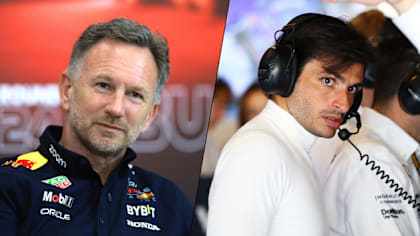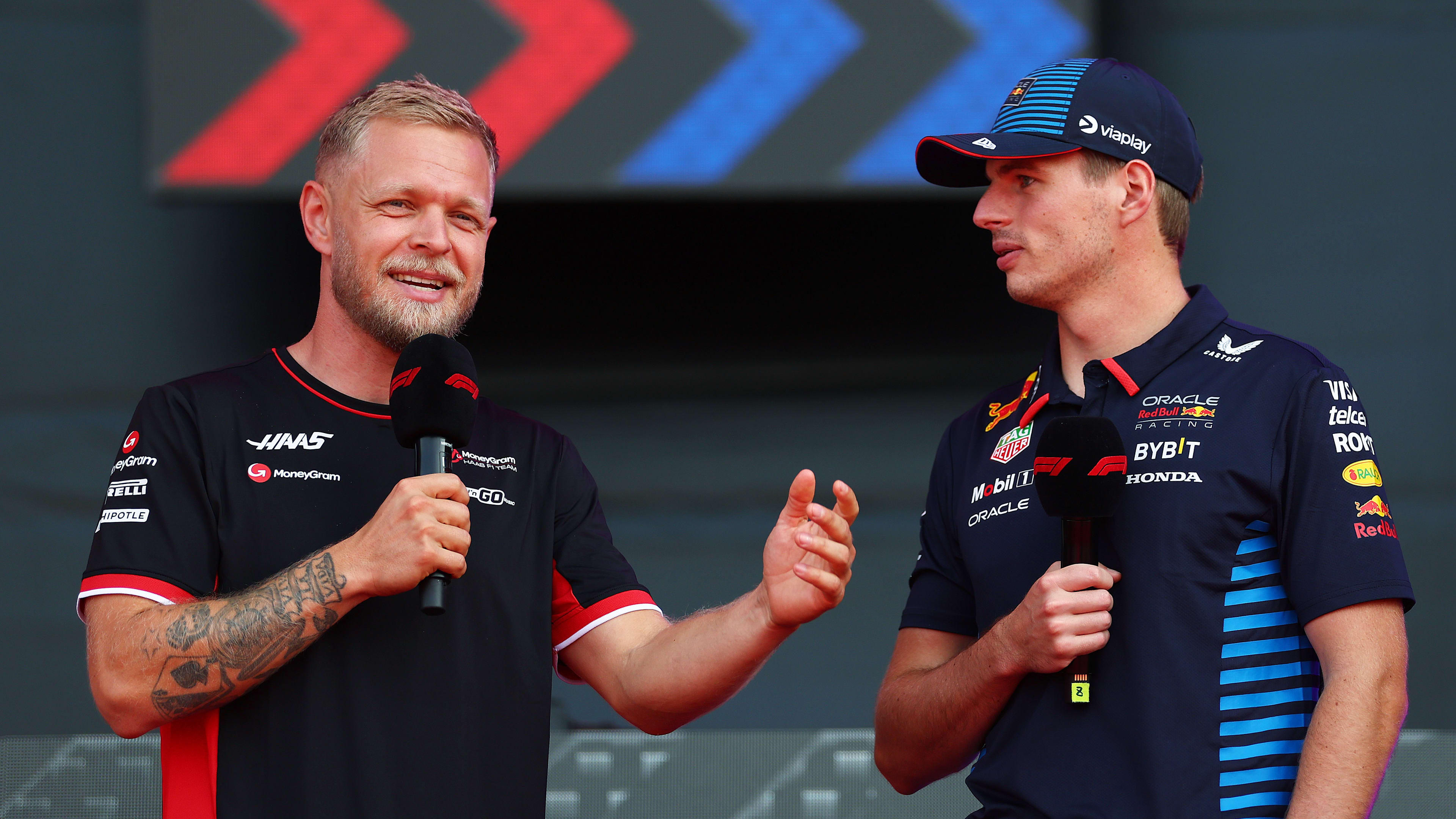TEAM REPRESENTATIVES – James Key (Toro Rosso), Nick Chester (Renault), Paul Monaghan (Red Bull Racng), Eric Boullier (McLaren), Monisha Kaltenborn (Sauber), Paddy Lowe (Mercedes)
PRESS CONFERENCE
Q: Eric, let’s kick it off with you: some very bullish words from your boss Ron Dennis recently, that you will be the team to end Mercedes domination of Formula One. What justifies that claim?
Eric Boullier: Well, first of all, you know what the ambition of McLaren is and this is what we are targeting anyway. We had to take some strong decisions in the past, first of all to change the PU supplier to go to works team status, because really this is the only way to go back to the front, and I think this is a statement from Ron… you know Ron has a great career, he is a legend in Formula One and I think it’s also an extra motivation for all of us to achieve what we want to do.
Q: Now, going into this weekend, both of your drivers have been saying that they think Q3 and points are possible for both cars. Based on what you’ve seen today are you feeling that that’s on?
EB: Yes, it’s possible. Obviously we don’t have any flexibility, we are still missing here and there on the performance, also we have to deliver a perfect lap and obviously expect no traffic or nothing wrong on the track, so yes, it’s possible today, after P1 and P2.
1 / 3
Q: Thanks for that. Nick, coming to you, obviously an update engine and a new aero package in Spain look to have given you a few tenths of a second. Tell us about this engine upgrade first and the areas where it’s improved?
Nick Chester: Well, the new B-Spec engine we have here, it’s an improvement on driveability and an improvement on power and it performed faultlessly through the test and through FP1 and FP2.
Q: And on the chassis side: resource-wise are you able to do much more this year than you were able to last year or in fact are you keeping your powder dry looking at the 2017 regulations?
NC: Well, I’m sure you’ll come to it a bit later, but it’s a difficult split how much you put into 2016 and how much you put into 2017. There’s a bit more we can do in ’16 but we’re also at point in the year when you need your resources to move to ’17, so that sort of split is being carefully judged at the moment.
Q: Thank you. Monisha, it’s been a while. We’ve heard a lot about the challenges facing your team in the last few months, what can you tell us?
Monisha Kaltenborn: Well, nothing more than yes, we have certain challenges and we are working very hard to overcome the situation and I’m confident that we’ll resolve it shortly.
Q: So do you have the feeling you’ve got a solution in the pipeline for long-term sustainability?
MK: Yes, we are working on that since a while now and we also know that we need that. If you look at today’s Formula One environment to be strong as an independent team you need to have a strong partners. So we have always been open to that and now we are pursuing our chances and we hope to resolve that soon.
Q: Thank you for that. James, engine manufacturers have committed to the teams they will supply next season. How happy are you with the process and the engine that you’ll be racing with next year?
James Key: I think the process is OK, to be honest with you, because if you are in a spot of bother with engine supply at least there is a process there to help you out in sensible time. As far as what we have for next year, I think that we’re happy. We’ve suffered a bit over the past three years with not quite being where we’d like to be. Not that there’s anything wrong with our current supply but it’s not developing, it’s a year old unit. Ferrari are doing a great job to support us with it, but it would be nice to be current with PU and have a developing unit.
Q: OK, thank you. You seem to be in demand personally on the engineering marketplace. Do you see your long-term future being at Toro Rosso?
JK: I’ve got a contract with Toro Rosso for some time to come, and there’s a lot of work to do still. So I’m not thinking about anything else at the moment. I want to stick with where I am. It’s a great group of people to work with and there’s still plenty to do, so for now I’ll be a Toro Rosso.
Q: OK. Paddy, turning to you, we have to start of course with the fallout from the collision of your two drivers in Spain. Very unusual to have two front-running team-mates that take each other out and neither of them score any points –very rare in Formula One. How different from the aftermath of the 2014 Spa collision was the discussion that took place internally within the team and were there any learnings from what happened in Spa and the aftermath that you brought into that discussion with the drivers?
Paddy Lowe: I think going back to Spa in 2014, we found what really bad looked like. That was a bad moment in the team, but actually a good one, because we built from there a much, much stronger partnership between the drivers and the rest of the team. So there was an understanding and I think we’re in a lot better place now and we saw that pan out with the accident in Spain where it was dealt with very maturely, across between the drivers. We had a good hearing with the stewards. We saw it very much the same way they did: it was a racing accident as a function of two guys really pushing each other to the limits. It was exacerbated by the power difference between the two cars, which really made things happen very, very quickly – so a split second. And they both saw it, in the end, as a racing accident, so we moved on.
Q: One of the notable features of that incident in Spain and the previous times that Hamilton has started on pole this season, with Rosberg alongside, is that he lost the lead to Rosberg on that opening lap. What’s causing that problem for Hamilton in his starts and how are you addressing it with him?
PL: Well, in the particular case of Spain, actually Lewis had a better start than Nico, but it’s a function of that race that there is a very long drag to the first corner where you can get an advantage in the two, so Lewis’ start was better than Nico’s. Nico did a great job through Turn One, as we saw, which I think caught Lewis by surprise. It wasn’t a feature of that particular event. Race starts are very variable, even more so nowadays because of the regulations, which have restricted the input of the team to the process. So by intent they're more variable. I think we’ve had three of best starts of the five races so far, but then we’ve had some very mediocre ones as well. Lewis, for example, had the best start on the grid in China, exactly where he didn’t need it, putting him straight into an accident. So, that’s the luck that sometimes comes your way. In general, we keep trying to make the starts more consistent, as well as better, but that’s a challenge shared with all of our competitors, we’re all in that same game. It’s very difficult.
Q: Thanks for that. Paul, coming to you, Max Verstappen, he comes to the team, qualifies on row two, wins the race in a car he doesn’t know. You’re an experienced engineer, you’ve worked with a lot of top drivers, can you put that into some kind of context for us?
Paul Monaghan: I was impressive was it not? I think Max displayed a great level of maturity, he was very calm in the car, nothing fazed him, he settled in very quickly. I think we’re blessed with a very good chassis this year, which makes it easier, I think, to learn than perhaps a more difficult one and Max did a very assureds job. So, it was fantastic.
Q: Let’s talk about the Renault engine. Remi Taffin is quoted as saying he believes it’s worth half a second a lap. What are your impressions and where do you expect this new engine to put you relative to Mercedes and Ferrari when we move on to the power circuits in, for example, Canada and Austria coming up?
PM: I’ll take your question in stages: Remi is correct – at the more sensitive circuits it should be up there. Onto the next part of your question, where will it put us, we’re only ever measured relative to our opposition, so if they all stand still there’s a chance we’ll be very close if not ahead of Ferrari. Given that they won’t stand still, it’s hard to say that we can be ahead of them, but I think it’s fair to say we’ll be more competitive, we’ll be challenging them and if the opportunity comes we’ll challenge the Mercedes as well. What’s within our control is to maximise the performance of our car and if we do that then the resulting position is just a consequence of our relative pace to our opposition.
Q: Just for clarity, when you say ‘the more sensitive circuits’ what do you mean? Can you give us some examples?
PM: Some circuits are more sensitive to engine performance than others. My view of Remi’s statement is that it’s correct at circuits that are more sensitive to engine power – Canada, Spa, Monza – and less so at circuits which are less sensitive to engine performance, which would be here.
1 / 3
QUESTIONS FROM THE FLOOR
Q: (Agris Lauzinieks - Kapitals) Question to all panel. Given significant exposure to Britain at Formula One business and expected referendum on European Union on 23rd June, do you think in case of Brexit there might be impact on teams and sponsorship money, which is already affected by low oil prices and do you think Britain should stay in European Union?
PL: We have actually analysed it. One of our directors has looked at the issue because some of our staff members asked which way they should vote. He concluded that it didn’t really make a lot of difference, either to the company or to Formula One in general in terms of how we run the business. So we’ve left it to our employees to vote how they wish personally.
Eric, have you done a similar process?
EB: Similar position. We don’t believe there will be a significant impact on the Formula One business. As a team and the industry is mainly based in the UK but we have managed always to use some suppliers abroad and I don’t think it’s going to change much.
Anybody else? Monisha?
MK: Well, as you know we’re in Switzerland so in the first instance haven’t taken the step into the EU – may be good or bad. I think Switzerland is doing quite well, so it’s not for me to tell somebody to get out or not.
And of the people who are going to vote, are you prepared to share what you’re thinking? Paddy?
PL: I haven’t decided yet. Honestly.
Nick?
NC: No, I haven’t decided yet.
Paul?
PM: I join the club of undecided.
James?
JK: I agree with these guys, I haven’t decided either.
Q: (Joe Saward – Auto X) A question about the 2017 cars. Can you tell us about how much work you’re doing on the 2016 cars now and how much of your effort is already going into 2017?
JK: I think, to be honest, the birth of the ’17 regs, if you like, was always a little bit long-winded and so we had a pretty good idea what the chassis direction was likely to be from a tyre and suspension viewpoint, at least dimensionally but we took a little while to try to define the aero regs and the bodywork regs. So, in that respect, everyone’s had a start-point, which is maybe a little later than you’d want for a very fresh set of regulations. But there was still plenty you could do on the principals of a ’17 car beforehand, so we’ve been working on it for several months, as I’m sure everyone else here has. The split’s difficult to define at the moment because it depends of which department… engineering disciple, let’s say, you look at. But certainly on the aero side there’s a pretty massive impact from all of this, so there’s a big emphasis from us on the aero side. The same with simulation. The design office is yet to really pick up the big bits but certainly by after the August break they’ll be pretty much 100 per cent on next year’s car.
Eric, McLaren were heavily involved, obviously, in the 2017 plans…
EB: Well obviously we had to wait for the final decision of the regulations so there was obviously a push-back. When you switch your resources. So today I could say we are 50/50 looking at and still working on the current car.
Monisha?
MK: Like it’s been said. Work has been ongoing on it. So you’re working in parallel basically on both cars. We’ll all be very soon in the window where you then decide you totally switch over to the new one.
Paul?
PM: It was a small group that initially looked at it when the rules were still in gestation. I think as James said, the aero group is now starting to get its teeth into it – yet we’re not dismissing our 2016 car. So it’s a difficult split and I think it’s one that will become clearer as we go through the 2016 season. You move towards ’17. Design office is looking more and more at it, and as the concept evolves then I think they’ll pick up more and more of it and on we go…
And Paddy, you weren’t too keen on the development, were you?
PL: Well, the rules are set, we’re on it. It’s always a gradual migration but with such a big rule change, we’re inevitably migrating earlier than normal. But having said that, in the early phase of a project you can’t put hundreds of people on a programme where you haven’t fixed the major parameters, so its inevitably a gradual process.
Q: (Dieter Rencken – Racing Lines) Question to the team executives: Eric and Monisha. Basically a follow-on to Joe’s question about the 2017 regulations. On the engines, Eric, I wonder if you could expand on McLaren’s position regarding the engine agreement that was struck recently, whether you’re 100 per cent happy with it, whether it ticks all the boxes. The same to you Monisha – but I also believe you sent a letter or similar communication to the FIA and the Commercial Rights Holder outlining your objections on the engine agreement. If you could expand upon that as well please.
EB: Well, we have still actually… we are currently still discussing with the FIA about the outcome of this regulation, or, let’s say, this agreement between the FIA and the engine manufacturers. Most of it, we agree with it. There are still a few, let’s say, clauses where we may still have discussion on-going. We don’t want, obviously, to make it public. We have our opinion, our position. We are obviously investing with Honda a lot in the sport, making sure there is a competitive fourth power unit manufacturer soon. That’s why we discuss and may, at some times, have some opinions that are a little bit different.
Monisha?
MK: I’ll probably refer to the part with the letter. Yes, it’s correct that Force India and we have written a letter to the FIA and the Commercial Rights Holder in which we have stated our concerns about these changes but I guess it’s not up to us now to really elaborate on it or comment more on it. I guess it up to those who have the letter. And I’m sure neither Force India nor Sauber would have any objections if they discussed that with you.
Q: (Peter Farkas – Auto Motor) This is a question for the technical guys basically. Today we are again seeing some spectacular lap times. I think we are 1.1s away from the lap record or something. I find it quite surprised that, even if you take into consideration that this year we are using softer tyres than last year at most circuits, the cars seem to have taken a bigger step forwards technically than between 2014-15, even though this is the third year of the same regulations. Could you please explain why is that? Why has technical evolution been sped-up so much this year from last year?
NC: I think it is mainly a function of the tyres. We expect all teams to have a pretty good gain rate each year – but I think by the time you add that and you add the tyre delta, you do end up with a big difference to last year.
Paddy?
PL: Yeah, I understand what you’re saying. I’m not sure it’s such a clear picture. I think the tyres are certainly causing that impression – but I think in general the teams have made the same amount of progress between the two years.
Do you agree with that Paul?
PM: I can only speak for what I know we’ve achieved. The chassis step was good, if not spectacular. It’s not an unusual step to make year-to-year. The majority of the increase, certainly at this track and thinking about it, the ones we’ve visited thus far, have come from the tyres. We are two steps softer than we were last year here? You’re going to see some improvement from that as well.
James, anything to add?
JK: I tend to agree the tyres are a big player in this – but equally I think we’re still in a period where power units are developing quite quickly. And this is, y’know, if you look at the beginning of the process, take 2014, everyone’s new to the power units and new to the aero and there’s various discrepancies in performance levels and strengths and weaknesses and so on, they’re beginning to equal out, and by doing so I think it’s bringing teams a little bit closer together but still maintaining maybe a bigger development rate than we expected. And the guys at the front of that race are maybe having to pull out the stops a little more than they expected. For me, although I agree that the tyres and the typical steps we’re making aren’t surprising, I think there are slightly more parameters now to play with, to take one year to the next.
Q: (Walter Koster – Saabruecker Zeitung) Ms Kaltenborn, how do you see the Sauber situation today and formerly at the time of Peter Sauber as team principal. What are the reasons that you have today a harder time than him? Is it depending only on your results and what are the reasons for financial difficulties to pay your mechanics on time?
MK: OK, so to maybe sum it up, I think Formula One has changed a lot. If you look at the times when Peter Sauber was team principal and I wouldn’t take the time when he returned as team principal in 2010 to the sport, but if I look at the time before, it was a very different sport and a very different kind of business with a very different financial set-up and sporting set-up. So I don’t think you can really compare the times. Challenges for private teams like ours have become bigger, year-by-year, particularly also due to the rule changes which have made things in the last few years far more expensive, if you look at the power train itself but also with regard to the distribution of income. There was a time when teams were not getting 50 percent but even less but yet the economic environment was much better, where you could get far more sponsors, so I don’t think it’s really that easy to compare the times, it doesn’t just have to do with people or the situation within the team, but the overall surroundings we were in.
Q: (Silvia Arias – Parabrisas) Paul, a question about the new engine today. We saw fantastic laps for Ricciardo. I would like to know when you’re going to be able to give this new engine to Max?
PM: All being well, Montreal.
Q: What does all being well mean?
PM: The engine surviving here, that’s in the car, and the supply of a new one for Max in Montreal.
Q: (Dieter Rencken – Racing Lines) The four technical representatives; from this race onwards, the drivers need to keep their tear-off visors inside the car somehow. I know it looks like a trivial question but what have you done to accommodate this stipulation?
PL: Well, for this race, we’ve been permitted to two tear-offs during the race itself so I think that will be sufficient so I think there’s a constant dialogue with the FIA to find a practical way forward with this.
Q: How do you mean, that you’ve been permitted to two during the race?
PL: They’re allowed to use two tear-offs during the race, the drivers, but none in practice.
NC: There’s just two you can tear off during the race and that’s it really.
Q: (Sam Collins – RaceCar Engineering) I know there’s a lot of discussion going on at this race meeting about cockpit protection systems. Can you, the four engineers, update us on where you are and what you’re testing in the wind tunnel and cfd at the moment and what you expect to see in 2017 if anything at all?
PM: It’s a tricky question to answer, that one, because it involves the FIA who are not represented here to discuss that one and I think it would be... It’s fair to say there are two systems available: halo and aero screen. Both have merits, both have downsides to them and whilst the assessment of that is still going on, I think we should let that process continue. There’s a TR meeting tomorrow at which we can discuss it further, hopefully from there there will be some conclusions and that, I think, is the state of play for all of us at the present time.
JK: I reflect what Paul says, really. I think there’s a deadline later in the year to go through the final decisions as to how this is going to pan out. I think it’s fair to say there aren’t any opinions yet because it’s still very much a work in progress and it’s a good thing to be looking at. It’s important that we always look at these new ideas for safety, but I think that mid-year is when we will begin to know exactly where it’s going to go so Paul is right, we need to wait and see what further discussions hold.
NC: There are the two options on the table, the halo and the aero screen. I think the halo solution may be a little bit more mature, people have done a little bit more work with it, but there’s a lot more to talk about tomorrow in the tech regs meeting.
PL: Just to say it’s a good example as to how the teams are constantly working together, very constructively, they do a lot of the R&D for new regulations and this is a great example. The work is not yet done. There will be a big discussion tomorrow to decide on what are the next steps.
Q: (Joe Saward – AutoX) The sport is under attack, legally, as a result of the accident of Jules Bianchi. I don’t suppose you’re going to say an awful lot but is there any reaction from anybody as to whether this is right or wrong?
Q: Monisha, you have a legal qualification, why don’t you start
MK: No, I prefer not to react because I have a legal qualification.
PL: I only saw the headline, I haven’t read it so I can’t really comment.
EB: Same.
JK: Same.
PL: I can’t quote on the legal side, James, but I think it just shows we need to keep pushing on everything we do to make the cars safer which is what we will be pursuing tomorrow in the tech regs meeting.
Q: (Peter Varkas – AutoMotor) I am risking another no comment here, I’m afraid. We like to talk a lot about the technology transfer between Formula One and road cars and the amazing thermal efficiency of these power units. There’s been a lot of stories lately about almost all engine manufacturers using pre chamber ignition technology. I think it is now quite common knowledge that the manufacturers know much more about each other’s engines than we do. Why do you still keep secret if the technology basically is in use or not in Formula One? It could be a good story, it would be good to communicate it and I don’t think you could risk giving out any secrets to your rivals. Can you confirm if it is in use in fact and if you can’t comment on that, why not?
PL: Well. We are always using new technologies in Formula One. It’s one of the great attractions of the sport but at the end of the day, you’re also trying to be a competition, so I think you’ve always got to find that balance between what you say, what you talk about and what you keep to yourself. Inevitably these things do migrate around the paddock because apart from anything else, people move teams or move manufacturers, so information does spread around and so at some point people will talk openly about things they believe to be no longer a differentiator. That’s a general answer rather than a no comment.
NC: Similar to Paddy’s comment really. Teams work on things, they want to keep them secret. We’re all looking for competitive advantage. There may be some things we do that are useful for manufacturers we work with but we’re not going to transfer knowledge outside that.
Q: (Dieter Rencken – Racing Lines) Monisha, we haven’t seen an awful lot of you recently. However, in Bahrain, the Grand Prix that you weren’t at, I believe, the commercial rights holder said that there have been conversations between FOM and the EU, as a result of the complaint that you registered with the EU. Have you got any more to add to this? Have there been conversations between yourselves and Force India at the EU at all or has there been no progress?
MK: No, I’ve got nothing more to add to it but that doesn’t mean there’s been no progress. As you know, there has been a certain restructuring which is commonly known within the EU regarding sport cases so it’s a very good move, generally, for sport and these kind of complaints and Force India, we are absolutely confident that it’s going to be looked at and is being looked at very seriously.
